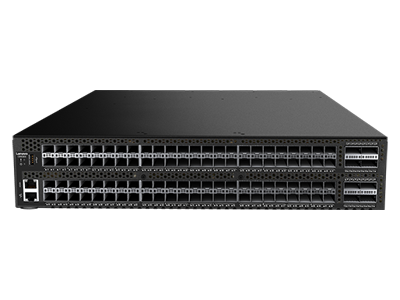Leveraging Fiber Channel’s Low Latency for AI Applications
Real-time processing has become essential for several industries, including finance, healthcare, and more, in artificial intelligence (AI) applications. Analyzing data quickly and accurately is essential for identifying irregularities, detecting decisions, and streamlining processes.
The network connection is an essential component of this infrastructure since it directly impacts latency, or the amount of time it takes for data to move from its source to its destination. Fiber Channel stands out as a potential solution in this regard because it can provide high-speed, low-latency data transmission.
Here, we discuss methods for improving real-time AI applications by taking advantage of Fiber Channel’s low latency.
Knowing Fiber Channel and Its Advantages
Fiber channel is a high-speed network technology used primarily in enterprise storage area networks (SANs). In comparison to traditional Ethernet networks, it leverages fiber optic connections to deliver higher capacity and lower latency.
The architecture of Fiber Channel is designed for dependability, scalability, and performance, making it suited for demanding applications such as artificial intelligence.
Reduced latency is one of the most significant advantages of Fiber Channels. Unlike traditional networking solutions, Fiber Channel speeds up data transmission across the network, allowing for rapid connections between storage systems, servers, and other devices.
This low-latency capability is extremely valuable in real-time AI applications that require fast data processing.
Ways to Take Advantage of Fiber Channel Low Latency for AI Applications in Real-Time
1. Infrastructure Optimization
Organizations must invest in optimal infrastructure to fully benefit from the low latency of fiber channels. This includes deploying high-performance Fiber Channel switches, adapters, and storage arrays that can handle the demanding requirements of real-time AI workloads.
Organizations can realize the benefits of fiber channel technology by ensuring that each component in the network architecture is designed to reduce latency.
2. The Parallel Processing Framework
Large datasets and intricate algorithms are common in real-time AI systems, and their proper operation depends on parallel computing. Organizations can use Fiber Channel’s high-speed connectivity to create parallel processing systems that divide computational jobs over numerous nodes or servers.
This method not only shortens processing time but also minimizes latency by allowing for simultaneous data delivery and analysis.
3. Localization of data
Reducing data transfer over the network is critical for lowering latency in real-time AI systems. Organizations can employ Fiber Channel’s low latency to deploy data localization strategies, which involve storing and processing essential datasets closer to the point of use.
Organizations can improve real-time data processing workflows and reduce data transfer times by colocating storage and compute resources within the Fiber Channel network.
4. Prioritizing the Quality of Service (QoS)
Prioritizing traffic based on application requirements is critical in a shared network environment for maintaining consistent performance and reducing latency. Fiber Channel has strong Quality of Service (QoS) capabilities, allowing enterprises to prioritize real-time AI workloads over less time-sensitive traffic.
Organizations can improve the responsiveness of real-time AI applications by defining QoS policies at the network level. Moreover, This ensures sufficient bandwidth and minimal latency for crucial data delivery.
5. Monitoring and Optimizing the Network
Maintaining low latency and improving Fiber Channel-based network performance require constant observation and development. Organizations can identify possible bottlenecks, latency hotspots, and performance degradation in real-time AI workflows by implementing advanced monitoring tools and analytics.
Route optimization, traffic shaping, and buffer tuning are examples of proactive optimization strategies that help to provide consistent low latency and optimal network performance, especially under dynamic workload conditions.
6. Memory-based Computing
In-memory computing includes storing and processing data directly in the system’s main memory, avoiding the need to access data from disk storage, which can cause latency.
Organizations can use the low latency connectivity of Fiber Channel to develop in-memory computing systems for real-time AI applications. Therefore, This technique speeds up data access and calculation, resulting in speedier insights and decisions.
In-memory databases and distributed caching solutions can improve performance even further by using Fiber Channel’s high-speed connectivity to seamlessly synchronize data across distant memory nodes.
7. Prefetching of Predictive Data
Predictive data prefetching is the act of anticipating future requests for data by using predictive analytics and historical patterns to retrieve and cache the information in advance.
Organizations can use Fiber Channel’s low latency and high-speed connectivity to create predictive data prefetching algorithms and reduce data access latency in real-time AI applications.
Organizations can improve application responsiveness and performance by anticipating data requirements and prefetching pertinent datasets into memory or cache.
8. Collaboration With Edge Computing
By processing data closer to its source or point of consumption, edge computing reduces the need to transfer massive volumes of data over great distances to centralized data centers.
Organizations can deploy real-time AI applications at the network edge by combining Fiber channel connectivity and edge computing infrastructure, In other words, low latency is critical for quick decision-making and response.
Fiber Channel’s high-speed connectivity offers effective data transfer and processing at the edge. Indeed, It allows for faster insights and actions in applications such as IoT (Internet of Things) analytics, autonomous vehicles, and industrial automation.
An Analysis of a Financial Services Fraud Case Study
Take real-time fraud detection in the financial services sector as an example of how Fiber Channel’s lower latency can be applied practically in real-time artificial intelligence. Similarly, financial institutions use AI algorithms to evaluate transaction data in real-time and detect possibly fraudulent activity.
By utilizing Fiber Channel technology to lower latency, organizations can swiftly process large amounts of transaction data. It allows for the rapid detection and prevention of fraudulent transactions.
However, Fiber Channel’s low latency ensures that vital notifications are generated quickly. As it allows financial institutions to respond proactively to security issues and minimize financial losses.

